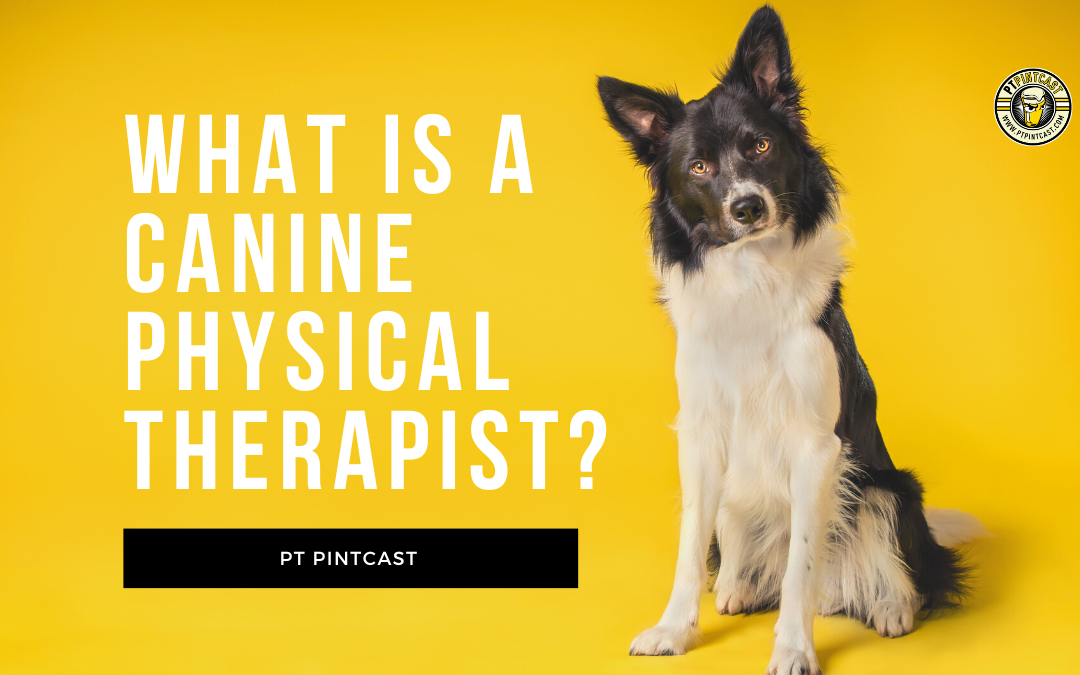Canine physical therapy is a form of rehabilitation that is used to help dogs recover from injuries, surgeries, and other conditions that can affect their mobility and overall quality of life. It is often used in conjunction with traditional veterinary care to help improve a dog’s strength, flexibility, and range of motion.
Physical therapy for dogs can include a wide range of techniques and modalities, such as exercises, massage, hydrotherapy (water therapy), and the use of specialized equipment. The goal of canine physical therapy is to help dogs return to their normal activities as quickly and safely as possible, while also reducing pain and discomfort.
Physical therapy can be beneficial for dogs with a variety of conditions, including arthritis, hip dysplasia, spinal injuries, and post-surgical recovery. It can also be helpful for older dogs or those with chronic conditions that affect their mobility.
Your veterinarian or a licensed physical therapist can help determine if physical therapy is appropriate for your dog and develop a treatment plan that is tailored to your dog’s specific needs.
How to become a canine physical therapist?
To become a physical therapist for dogs, you will need to complete a specific education and training program. Here are the steps you can take to become a canine physical therapist:
- Earn a bachelor’s degree: Most physical therapy programs require applicants to have a bachelor’s degree in a related field, such as kinesiology, exercise science, or biology.
- Complete a physical therapy program: After earning a bachelor’s degree, you will need to complete a physical therapy program that is accredited by the Commission on Accreditation in Physical Therapy Education (CAPTE). This typically takes 3 years of full-time study.
- Obtain a license: In most states, you will need to obtain a license to practice physical therapy. To do this, you will need to pass the National Physical Therapy Examination (NPTE) and meet any other state-specific requirements.
- Specialize in canine physical therapy: Once you have completed a physical therapy program and obtained a license, you can pursue specialized training in canine physical therapy. This may involve completing additional coursework or obtaining certification from a professional organization, such as the Canine Rehabilitation Institute or the University of Tennessee College of Veterinary Medicine.
It’s important to note that becoming a physical therapist for dogs is a significant investment of time and resources, but it can be a rewarding career for those who are passionate about helping animals and making a difference in their lives.
Canine Physical Therapy Certification
Canine physical therapy certification is a professional credential that demonstrates a physical therapist’s expertise in treating dogs. To obtain certification, physical therapists must typically meet certain educational and experiential requirements and pass an examination.
There are several organizations that offer canine physical therapy certification, each with its own specific requirements and procedures for obtaining certification. Some examples of organizations that offer canine physical therapy certification include the Canine Rehabilitation Institute (CRI) and the University of Tennessee College of Veterinary Medicine (UTCVM).
To be eligible for canine physical therapy certification, physical therapists may be required to have a certain level of education and experience in the field, as well as a current physical therapy license. They may also be required to complete continuing education courses or participate in other professional development activities to maintain their certification.
Obtaining canine physical therapy certification can be a valuable way for physical therapists to demonstrate their knowledge and skills in this specialized area and may enhance their career prospects and professional opportunities.
The Academy of Orthopaedic Physical Therapy has a special interest group (SIG) that focuses on advancing knowledge and clinical practice around animal physical therapy.
Cost of Canine Physical Therapy
The cost of physical therapy for dogs can vary widely, depending on a number of factors, including the severity of the condition being treated, the type of treatment being recommended, and the location of the therapy. Some general estimates for the cost of physical therapy for dogs are:
- Initial evaluation: $50-$200
- Follow-up visits: $40-$100
- Home exercise program: $50-$200
It’s important to keep in mind that these are just estimates, and the actual cost of physical therapy for your dog may be higher or lower depending on your specific situation. It’s always a good idea to discuss the cost of treatment with your veterinarian or physical therapist before starting therapy to get a better idea of what to expect.
How to find a Canine Physical Therapist
There are several ways you can find a canine physical therapist:
- Ask your veterinarian: Your veterinarian may be able to refer you to a trusted and reputable canine physical therapist in your area.
- Search online directories: Many professional organizations, such as the American Physical Therapy Association (APTA) and the Canine Rehabilitation Institute (CRI), maintain online directories of licensed physical therapists who specialize in treating dogs. You can use these directories to search for therapists in your area.
- Check with local animal hospitals and rehabilitation centers: Many animal hospitals and rehabilitation centers have physical therapists on staff or have relationships with therapists who provide services to their patients.
- Ask for recommendations from other pet owners: You can also ask other pet owners in your area if they have experience with canine physical therapy and if they have any recommendations for therapists.
It’s important to keep in mind that not all physical therapists are qualified to treat dogs, so it’s important to choose a therapist who has the appropriate education, training, and experience in canine physical therapy. Be sure to ask about the therapist’s qualifications and experience before starting treatment.

